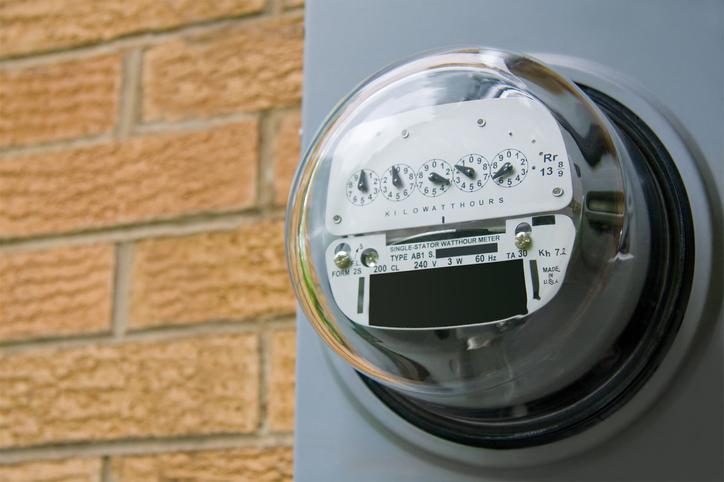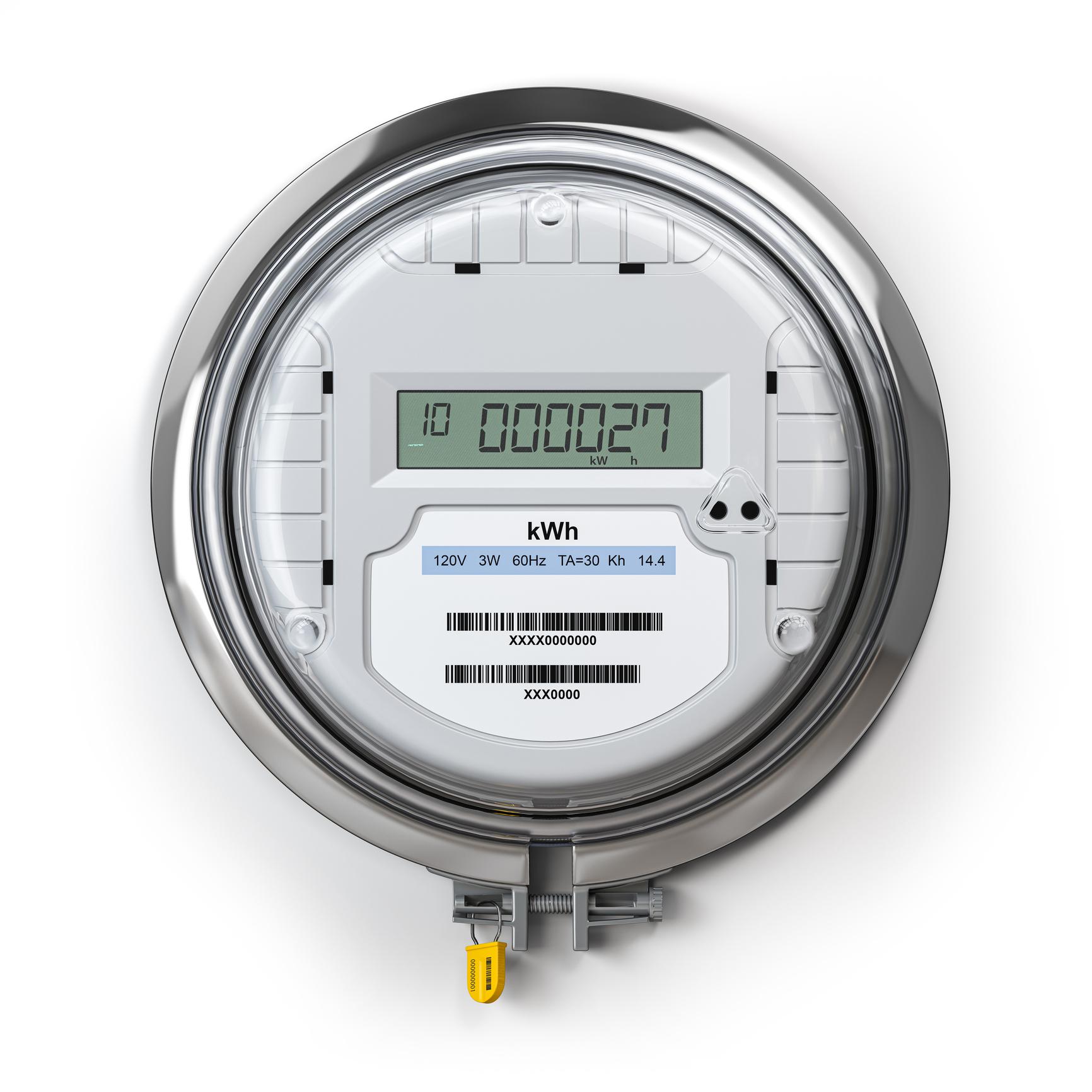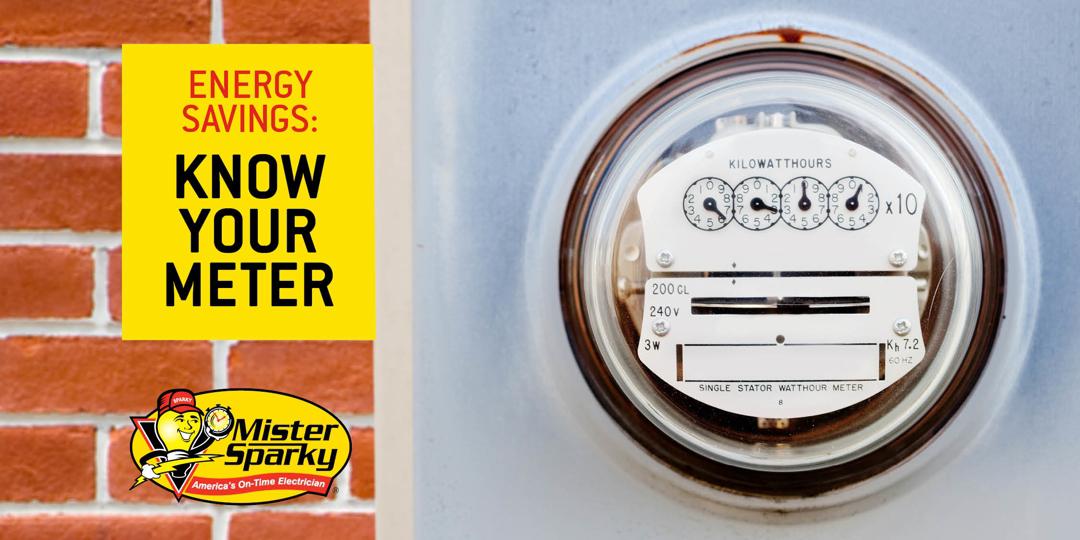A big part of responsible homeownership is managing your utilities. Being aware of how much electricity you’re using can help you determine what usage is necessary and where you can choose to cut back.
No one likes to be surprised by their electric bill. Often, you’re not even aware of how much energy you are using while you’re doing it! Maybe the amount you owed skyrocketed when you turned on the air conditioning for the summer or the kick-off to fall sports season has you washing and drying your family’s clothes a lot more. No matter what the cause of your hefty electric bill, once you use the electricity, you have to pay for it.
One way you can get a heads-up on any unusually high consumption is to keep an eye on your electric meter. See below to learn how to read the meter so you are prepared when the bill shows up at your door.
What is an Electric Meter?
An electric meter measures the total power consumed over a time period. Also known as an electricity meter, electrical meter, energy meter, or kilowatt-hour meter, this instrument calculates kilowatt-hours (kWh) into billing units. Hence, the more electricity you use, the higher the bill.
Most of us have seen one on the outside of our homes, readily available for the meter guy to step on your marigolds to obtain a reading.
Usually, the electrical meter is located outside close to a building near the breaker box. Sometimes you can find meters indoors, in crawl spaces or basements, also near the breaker box.
What Are the Types of Electrical Meters?
The most commonly used electric meters are dial meters and digital meters.
How Do You Read a Dial Electric Meter?
Typically thought of as a “traditional” meter, a dial meter can be recognized by its clock-like face and dial barometer.

Traditional electric meters can be tricky to read, but you don't have to be an electrician to decipher them. There are multiple dials on these meters, and they don’t all spin in the same direction. With a little practice, however, you can figure out how much power you are using and get a ballpark idea about what the bill will be.
Spinning Clockwise, Spinning Counterclockwise
There are five dials that go between 0 and 9. To read the meter, follow these steps:
- Start at the leftmost dial, which should be marked “10,000.”
- If the dial points directly at a number, write down that number.
- If the dial is between two numbers, write down the smaller number, regardless of which is closer to the dial.
- If the dial is between zero and nine, write down nine.
- Repeat for each dial, going from left to right. The resulting five-digit number is your kilowatt-hour reading.
There's one more thing to note ─ if the dial is pointing exactly to a number, and the next dial to the right points to a nine, you should subtract one from the dial that points to the exact number.
Now that you've got your reading, you can simply track how much it changes from month to month to get a handle on your energy use.
How Do I Read a Digital Meter?
A digital meter (also called a smart meter or advanced meter) has a digital face LCD display that reports the exact kWh in numbers.

An electric meter with a digital display makes it easy to see how much current is coming in. You may have to press a button to light up the display, after which, you can read the numbers from left to right. Write down every number except for those that are red or have a red background. Two lines of numbers refer to day usage versus night usage.
As with a dial meter, you can compare your consumption month to month and quickly be able to figure out if you're using up more energy than normal.
Digital meters measure your usage at more frequent intervals than a dial meter. If your utility has already implemented smart electric meters (likely after 2009), it's even easier to follow your consumption. Not only is the display in easy-to-read digital form, but the meter can provide updates on how much you're using as often as every fifteen minutes. That way, you can get an alert in real-time if your usage spikes so you can track down the culprit before you have to shell out a fortune in bills.
Is the Data from a Smart Meter Safe?
With smart or digital meters, there is no need for the someone to come by and check your meter. It’s understandable that you might feel uneasy knowing your meter data is wirelessly transmitted directly to the utility company. How can you be sure your data and information is safe? To ensure safety, there are specific unique identifiers attributed to the data and associated with the homeowner’s meter number and service address.
Read about how smart meter information is transmitted.
How Do I Read an Electric Meter with Solar Panels?
Many solar panel systems use a smart meter that has various readings capabilities. These meters will show you how much you are consuming from the utility grid or how much you are sending back to the grid if the system is designed to do so.
Read here for more on smart metering and solar panel customers.
What Is a “High” Meter Reading?
As a homeowner, you may be concerned with a high meter reading. But one’s meter reading isn’t one-size-fits-all; rather it’s based on previous readings from the same time period. “High” is relative to an existing reading or another utility bill.
How Do You Run an Off-Peak Electric Meter?
Off-peak and on-peak are times determined by the utility company. The utility company may give you a lower rate or higher rate based on time. For example: weekends are often labeled as peak hours because that’s when the most electricity is consumed. Whereas late nights and early mornings are considered off-peak because there is less demand on the electrical grid.
Choosing to use energy during “off-peak hours” may keep your bill from being extremely high.
Watch our video on ways to save energy and money.
How Do I Test the Accuracy of an Electric Meter?
The utility company can check the electric meter for accuracy, or you can test the system by recording the usage with another metering device(wattmeter). A higher bill can be a sign of usage. It could also be a sign that your meter is off-kilter.
Is My Electric Meter Broken?
Wishful thinking? Maybe not. Signs that your meter might be on the fritz could include digital errors, lack of dial movement, and an aging unit and/or rusty parts. Additionally, if your power goes out, it doesn’t necessarily mean that the electricity has gone out. If the power to your house is the only one in the dark, this could mean that your meter has pulled away or become disconnected from your house. When the meter is no longer connected to your home, the unit stops working as does the electricity.
Prevent a black-out with whole-home surge protection.
If this happens, it’s best to contact an electrical professional. Whether the power is out or if it seems like your bill is just a bit too high, we can offer solutions.
Conclusion
In addition to monitoring your own consumption, it's a good idea to watch the meter so you will know if the utility company accidentally overcharges you. If you need any help figuring out how to read your meter, contact your local Mister Sparky today!
















